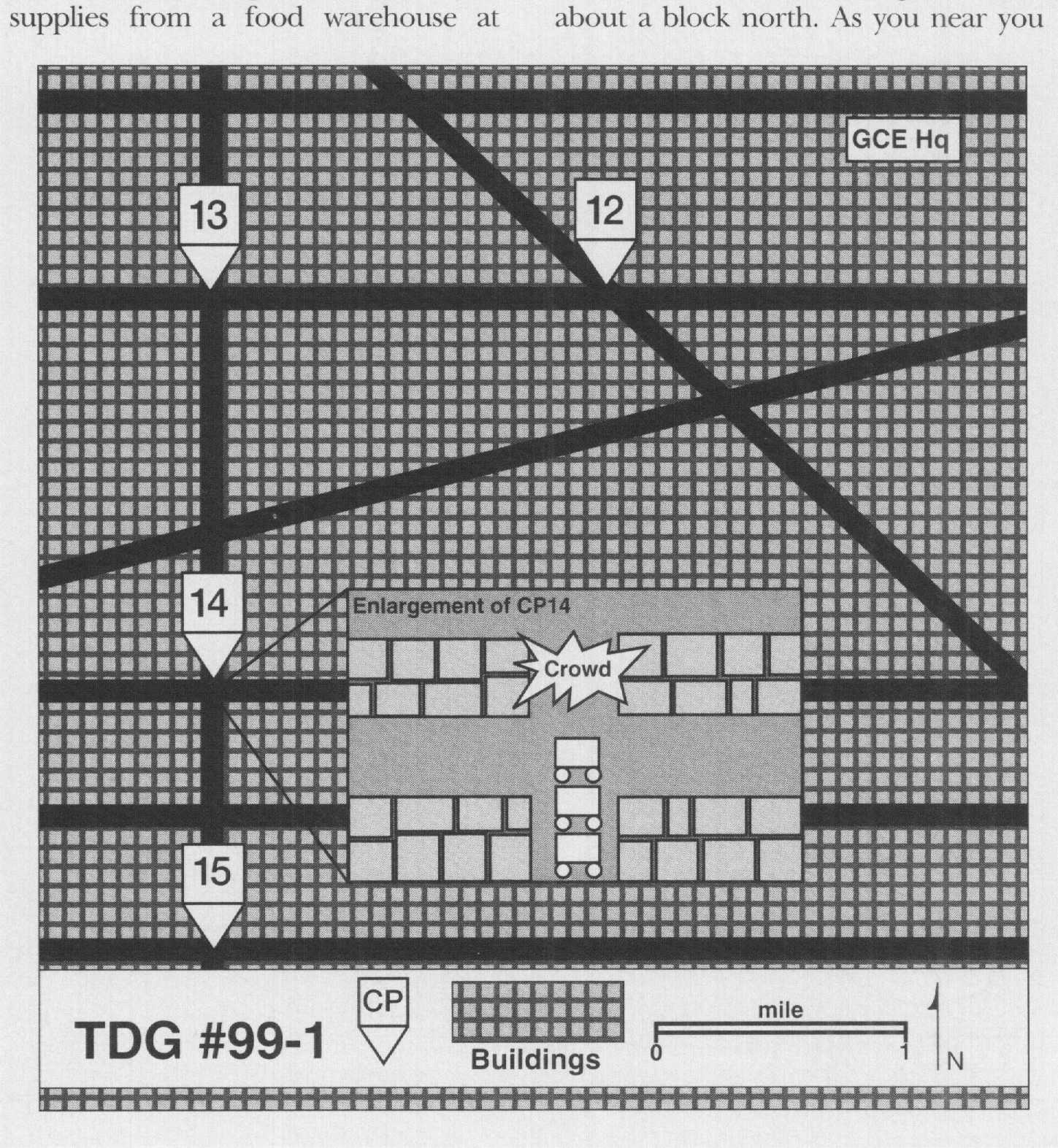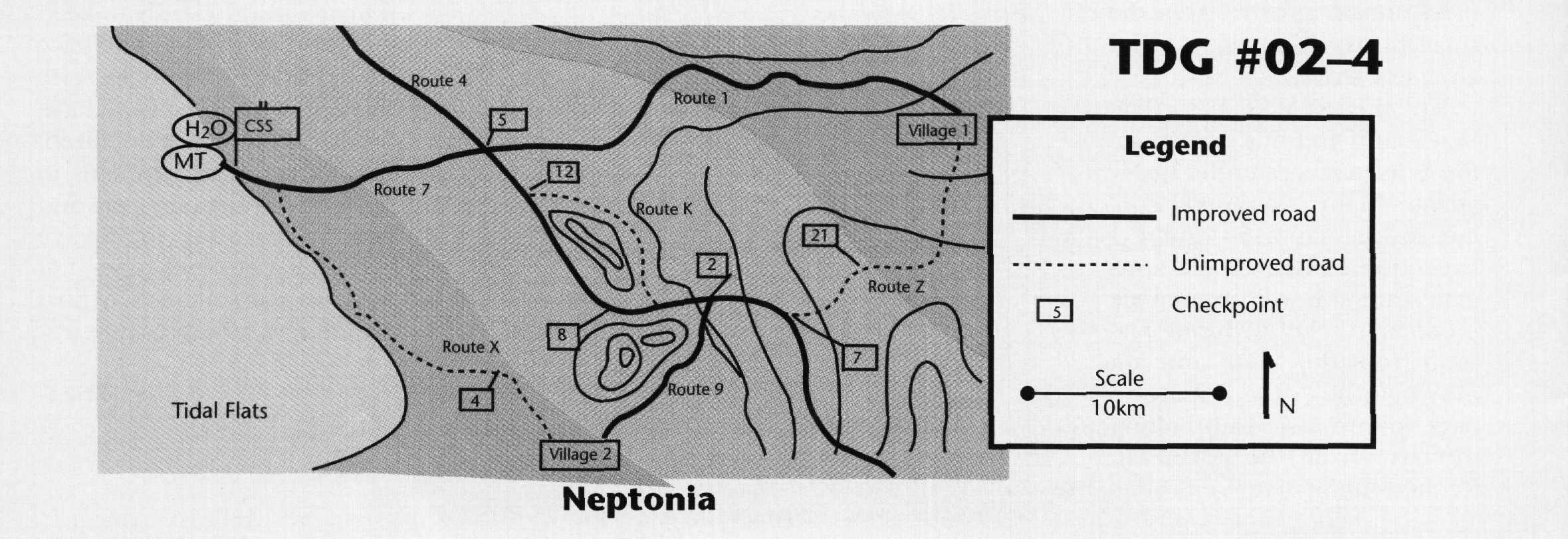by Staff, Marine Corps Gazette
 You are the S-4a (Assistant Logistics Officer) for 1st Battalion, 1st Marines. You are an infantry 2nd Lieutenant, but when you graduated IOC, you took 30 days PCS leave, plus 8 days of travel and proceed. By the time you checked in to the battalion, there were no platoon commander assignments left unfilled. The battalion XO gave you a choice between Adjutant and S4a, and you obviously chose to support the Marines in the field the rather than do paperwork and make coffee for the XO.
You are the S-4a (Assistant Logistics Officer) for 1st Battalion, 1st Marines. You are an infantry 2nd Lieutenant, but when you graduated IOC, you took 30 days PCS leave, plus 8 days of travel and proceed. By the time you checked in to the battalion, there were no platoon commander assignments left unfilled. The battalion XO gave you a choice between Adjutant and S4a, and you obviously chose to support the Marines in the field the rather than do paperwork and make coffee for the XO.
Since deploying to Raz Al Dezzel, you and the Marines of the S-4, the Motor Transport Platoon and Battalion Supply, have been “outside the wire” conducting convoy operations to sustain the battalion and the company (-)(reinforced) at “COP Ritz” and to support various humanitarian relief tasks. You have personally led 12 convoys through complex attacks, including IEDs, small arms fire, and indirect fire. Despite the high level of proficiency you and your Marines have developed, you have lost two M1113 “up armored” HMMWVs, numerous Marines WIA, and you have been wounded twice. You have already experienced more close combat than most of your fellow infantry lieutenants.
You have been assigned as the convoy commander for a eight-vehicle resupply convoy to COP Ritz. You have four M-1113 HMMWVS armed with a mix of .50 Cal and MK-19 Heavy Machineguns and four MTVRs with ring-mounted .50 Cal and M240B machineguns. One infantry squad from C Company is attached to your convoy as local security and to provide a dismounted counter ambush force. The convoy is carrying a mix of Class I, III, and V plus mail and personal demand items for the company at the Ritz. The class Iw (bottled drinking water) is a high priority for resupply since the water in the city of Minna Sultan Usween might carry cholera. Ammunition is always a priority as are batteries and fuel for the COP’s generators.
The route from the battalion FOB to COP Ritz is only about 3.5 miles and crosses gently rolling rocky semi-desert terrain. Off road movement is possible, but it is very slow and damaging to all tactical vehicles. There are numerous small shacks used primarily by shepherds and smugglers throughout the area, none closer than about 100 meters from the road. There is seldom any local vehicle traffic on the road; however, foot traffic, pedal “trikes,” and animal-drawn carts are common in early morning before the heat and humidity become oppressive.
Your experience leads you to ensure that in addition to the infantry squad you also have two MUGA commandos who serve as your interpreters, an Independent Duty Corpsman, HM1 Zorba, and two additional Corpsmen. You coordinate to depart friendly lines at noon since the route will be clear of local civilians during the heat of the afternoon and you will arrive at the COP before sunset. You plan to remain overnight at the COP and return to the battalion FOB the following day.
The JTF continues operating with degraded and denied communications. Since working radio sets are in demand only your MTVR and the four M1113 HMMWV heavy machinegun vehicles have communications within the convoy. You also have a radio capable of reaching the battalion, the forward company, for calls-for-fire, or for the dedicated MEDEVAC coordination net.
Fire support is currently limited to the battalion’s organic mortars, and Marine rotor-wing CAS on alert +15 at the battalion FOB. The battalion’s alert +5 section of MEDEVAC helicopters has a dedicated radio net. Response time is less than 10 minutes, and the JTF Level III treatment facility is 45 minutes flight time.
Your lead vehicles are almost a mile away from the outskirts of the city when there is a large explosion between your second and third vehicles. The third vehicle, an MTVR with the mounted infantry squad, stops and pulls off to the left (west) of the road. Your MTVR is next in the order of movement. You stop and the rest of the convoy comes to a halt and disperses in herringbone fashion to the left and right of the road. The machinegun section leader, Corporal Oh, reports on your convoy control net that no one was killed or injured in the IED explosion; however, most of the Marines in the MTVR “look like they walked out of the gas chamber.” They are unable to see clearly due to burning watery eyes, and are coughing violently with red rashes on their exposed skin. Corporal Oh reports the area “smells like a swimming pool or some kind of industrial cleaner.” Also, the MTVR took the blast under the front axle and engine compartment and is no longer drivable but looks like it can be towed. Of course, all of your MTVRs are equipped with tow-bars.
You direct HM1 Zorba to take his corpsmen to assess and treat the Marines in the MTVR and you start working on getting the MTVR on-tow by a second truck when you are wanted on the battalion radio net. COP Ritz is under attack by a force of roughly 40 unidentified enemy. A VBIED hit the barriers northwest of the mosque followed by two teams with suicide vests and automatic weapons. The Marines at the COP were ready for the attack and have fired an effective FPF disrupting the attack. No enemy have yet penetrated the perimeter of the COP, but the Marines are in imminent danger of being overrun.
Do you continue to recover the MTVR, treat the injured, and press the resupply mission when able; leave the convoy and join the fight at the COP; or do something else completely?
Requirements:
- 1. What are your orders to your Marines?
- 2. What is your report to the battalion?
Include an overlay sketch and provide a brief discussion of your rationale. Submit your solutions by email at [email protected] or to the Marine Corps Gazette, TDG 07-17, Box 1775, Quantico, VA 22134. The Gazette will publish solutions in an upcoming issue.
 You are a supply corporal in the MEU Service Support Group (MSSG). The MEU came ashore 6 days ago to assist nongovernmental organizations (NGOs) with humanitarian operations in a poor Third World country. The city you are in is extremely congested, packed with one- to three-story buildings wherever there is not a street. All streets shown are two lane but very narrow; some also have narrow sidewalks. A maze of alleys and walkways exist throughout the city, but they are too confusing to map. Marines have had very little violence directed at them, but ethnic and religious hatred has resulted in several violent dashes within the local populace. Rules of engagement (ROE) are as provided.
You are a supply corporal in the MEU Service Support Group (MSSG). The MEU came ashore 6 days ago to assist nongovernmental organizations (NGOs) with humanitarian operations in a poor Third World country. The city you are in is extremely congested, packed with one- to three-story buildings wherever there is not a street. All streets shown are two lane but very narrow; some also have narrow sidewalks. A maze of alleys and walkways exist throughout the city, but they are too confusing to map. Marines have had very little violence directed at them, but ethnic and religious hatred has resulted in several violent dashes within the local populace. Rules of engagement (ROE) are as provided.


 Requirement
Requirement
 You are the S-4a (Assistant Logistics Officer) for 1st Battalion, 1st Marines. You are an infantry 2nd Lieutenant, but when you graduated IOC, you took 30 days PCS leave, plus 8 days of travel and proceed. By the time you checked in to the battalion, there were no platoon commander assignments left unfilled. The battalion XO gave you a choice between Adjutant and S4a, and you obviously chose to support the Marines in the field the rather than do paperwork and make coffee for the XO.
You are the S-4a (Assistant Logistics Officer) for 1st Battalion, 1st Marines. You are an infantry 2nd Lieutenant, but when you graduated IOC, you took 30 days PCS leave, plus 8 days of travel and proceed. By the time you checked in to the battalion, there were no platoon commander assignments left unfilled. The battalion XO gave you a choice between Adjutant and S4a, and you obviously chose to support the Marines in the field the rather than do paperwork and make coffee for the XO.